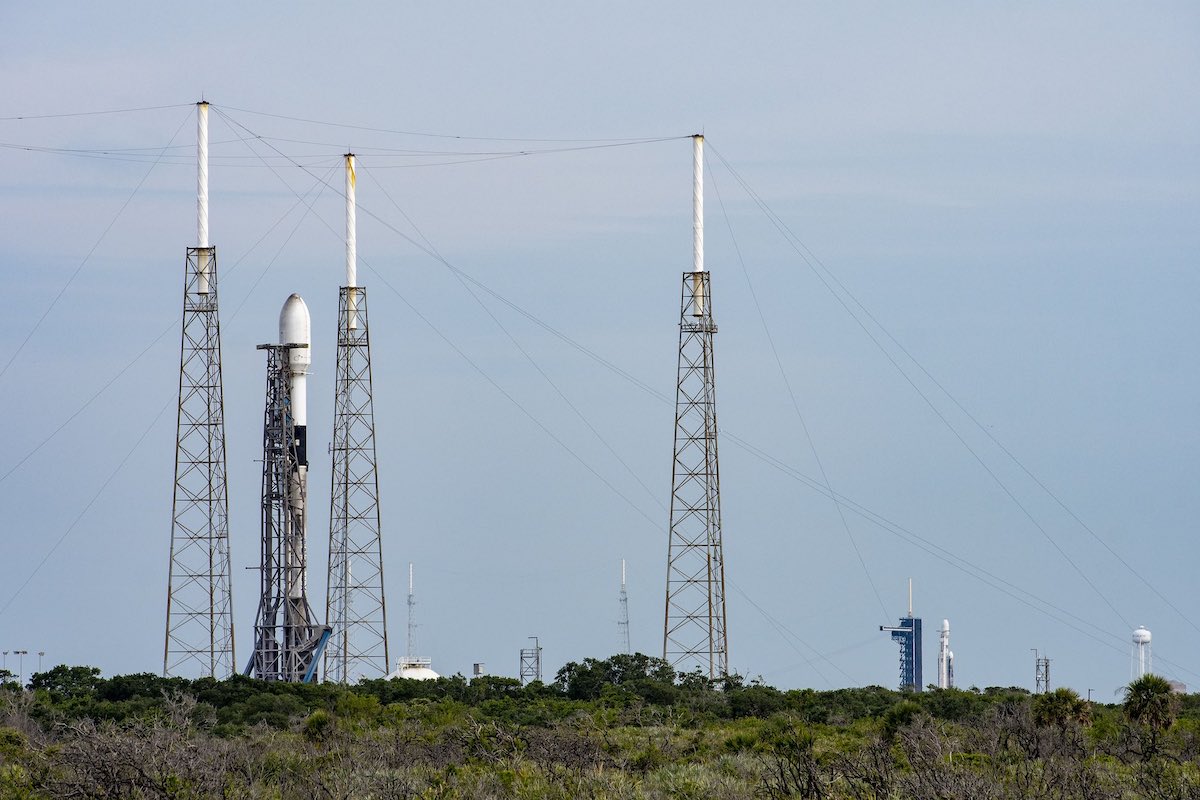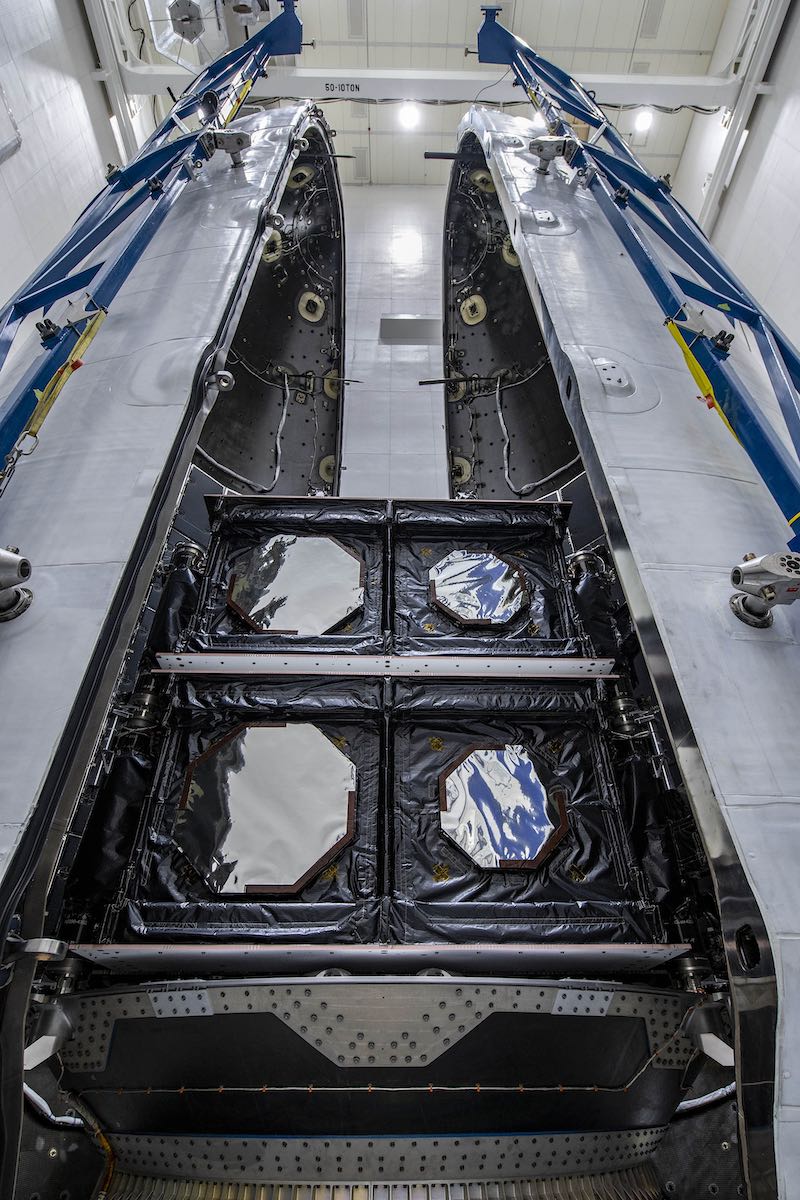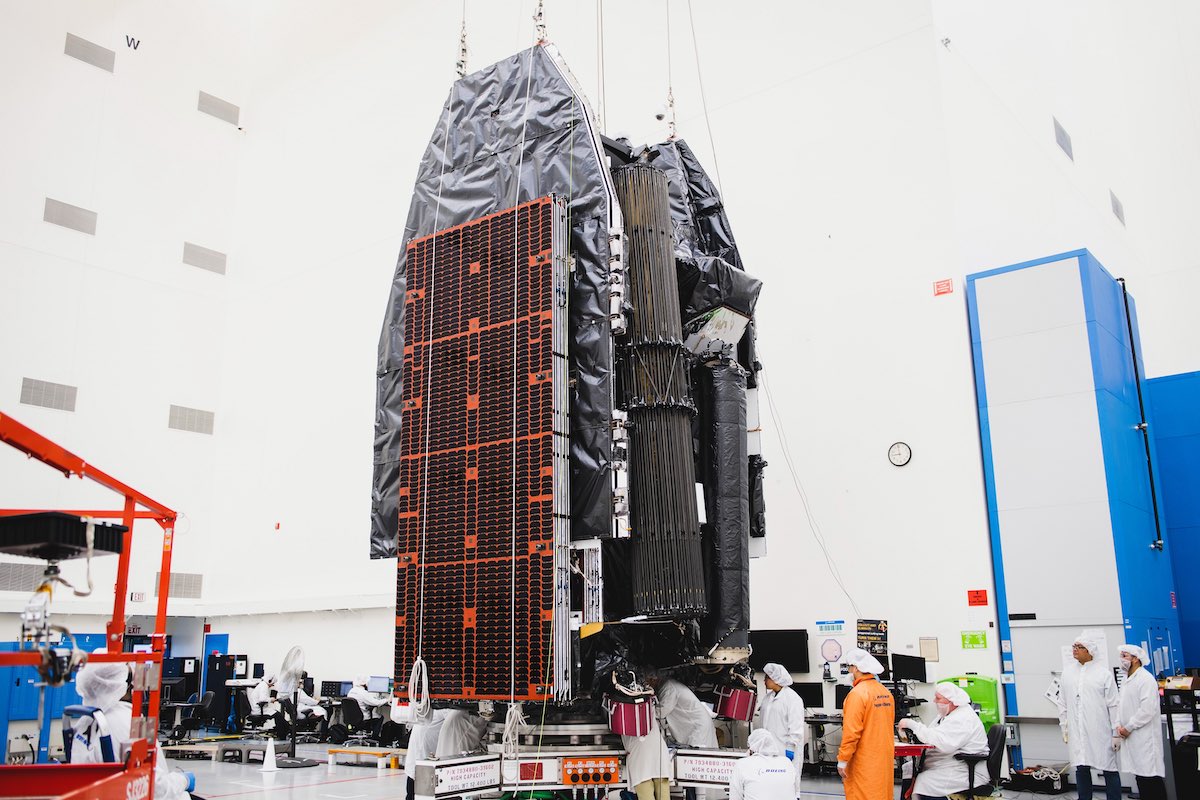Watch live coverage of the countdown and launch of the Falcon 9 rocket carrying two O3b mPOWER Internet satellites on Friday, April 28. SpaceX attempted to launch a Falcon Heavy rocket later that night, but the countdown was called off at the last minute. Before leaving. Follow us Twitter.
A SpaceX Falcon 9 rocket lifted off from the Cape Canaveral Space Force Station Friday evening for SES with a pair of O3b Internet satellites, but a last-minute stoppage for a Falcon Heavy mission later in the night prevented the company from pulling off the launch doubleheader.
A Falcon 9 rocket launch at Cape Canaveral at 6:12 pm EDT (2212 UTC) sent a second pair of Boeing-built satellites into space for SES’s O3b mPOWER network and mobile connectivity services.
Three and a half miles to the north, SpaceX prepared a Falcon Heavy rocket — combining three Falcon 9 first-stage boosters — to ride it into orbit 20,000 miles (about 35,000 kilometers) above the equator. Viasat 3 is an Americas broadband satellite manufactured by Boeing.
Forecasters predicted iffy weather Friday evening for both launches, but SpaceX took advantage of favorable weather conditions to get Falcon 9 off the ground Friday evening on the O3b mPOWER mission. The Falcon Heavy launch was originally scheduled for Thursday evening, but SpaceX delayed the flight by 24 hours due to severe weather that hit Florida’s Space Coast.
Ultimately, the Falcon Heavy countdown stopped a minute before liftoff, something SpaceX did not explain during their launch broadcast Friday night. A last-minute holdup eliminated any chance SpaceX could launch rockets again Friday night, marking the shortest time between two SpaceX missions in the company’s history and the quickest turnaround between two orbital-class launches. From Cape Canaveral since 1966.
Separate SpaceX launch crews watched the Falcon 9 and Falcon Heavy countdown almost simultaneously Friday night.

Launched from Pad 40 on a Falcon 9 rocket, the O3b mPOWER satellites will provide high-speed Internet services around the world with a “fiber-like” connection to users between 50 degrees north and south latitude, based on the SES, Luxembourg-O3b fleet-owned platform. Airplanes, cruise ships, energy companies, research institutes and remote communities can stay connected using the O3b network.
The two O3b spacecraft on the Falcon 9 rocket, combined, weigh about 9,000 pounds (4,100 kilograms) in the launch system, according to Boeing. The Falcon 9’s first stage booster landed aboard a drone in the Atlantic Ocean nine minutes after boarding the O3b mission on Friday.
Falcon 9’s upper stage fired its single engine three times, launching the O3b mPOWER satellites into an elliptical transfer orbit 4,300 miles (nearly 7,000 kilometers) above Earth, inclined about 10 degrees to the equator. The satellites use electric propulsion to reach their final circular operating orbit, about 5,000 miles (8,000 kilometers) above the equator.
SES already has 20 O3b first generation satellites in medium Earth orbit. They flew into space on Russian Soyuz rockets under a missile service contract with Arianebase.
The new O3b mPOWER satellites will operate in Medium Earth Orbit, or MEO, like the original O3b satellites. The first two O3b mPOWER satellites were launched on a Falcon 9 rocket from Cape Canaveral in December.
O3b stands for “the other 3 billion” to recognize the billions of people who don’t have access to reliable Internet service.

The original O3b satellites, built nearly a decade ago by Thales Alenia Space, had 10 user beams per spacecraft. The new O3b mPOWER satellites, built on Boeing’s 702 spacecraft platform, each have more than 4,000 beams that can be adjusted to focus bandwidth in areas of high demand.
SES is focused on developing broadband satellites for the MEO constellation, which places relay stations closer to Earth than in geostationary orbit, 22,000 miles above the planet. This reduces the delay or lag in internet signals compared to geostationary satellites. Only three geostationary satellites can provide global coverage, but more satellites in the MEO should reach around the world.
But that number is still far less than the hundreds or thousands of Internet satellites companies such as SpaceX and OneWeb are sending into low-Earth orbit. Satellites flying less than 1,000 miles above Earth have lower latency than MEO satellites, but require many more spacecraft for global coverage.
Another pair of O3b mPOWER satellites – no. 5 and 6 – scheduled to launch later this year on a SpaceX Falcon 9 rocket. SES has so far ordered 11 O3b mPOWER satellites from Boeing, with SpaceX rockets scheduled throughout 2024.
The Falcon Heavy is ready for its sixth commercial flight to GEO
When it lifts off, the Falcon Heavy mission will be the sixth launch of SpaceX’s triple-body rocket since 2018, and the second of five Falcon Heavy flights the company plans this year. This will be the first Falcon Heavy launch in which SpaceX intentionally discards all three first-stage boosters. SpaceX devotes all of the rocket’s propellants to placing the approximately 6-metric-ton (13,000-pound) Viasat 3 Americas satellite and its two co-passengers into near-geosynchronous orbit (GEO).
The mission will take about four and a half hours to reach its target orbit, requiring three burns by the upper stage engine. Direct insertion into geosynchronous orbit is one of the most challenging mission profiles in the launch industry. This feat requires extended battery life on the upper stage, and a custom band of gray thermal paint on the rocket to ensure the kerosene fuel does not freeze during hours spent in the cold environment of space.
Viasat did not disclose how much SpaceX paid for the launch. Intelsat officials said last year that SpaceX charged a premium per launch where the booster was expended.
The center core is brand new for the ViaSat 3 Americas mission, while the side boosters are reused from previous SpaceX missions.
ViaSat 3 Americas is the first of three new generation broadband satellites for Viasat to deliver Internet signals to underserved consumers, businesses and governments. Based in Carlsbad, California, Viasat has contracts with Delta Air Lines, American Airlines, United Airlines, Southwest Airlines, JetBlue and other commercial airlines to provide in-flight WiFi to passengers.

The satellite is about as big as a school bus, and its solar panels will expand in orbit to generate more than 30 kilowatts of power.
The spacecraft has one of the largest antenna reflectors ever sent into space and will rely on all-electric propulsion for better orbital maneuvers and station maintenance. After separation from the Falcon Heavy rocket, the spacecraft will use its plasma thrusters to raise its orbit to the final 700 miles (1,100 kilometers) into geostationary orbit, where its speed will match Earth’s rotation rate.
This will allow the Viasat 3 Americas spacecraft to orbit the same geographic position at the equator at 88.9 degrees west longitude, providing coverage over North and South America and adjacent oceans. Two satellites, Viasat and Boeing, are working to provide similar internet service in Europe, North Africa and the Middle East and the Asia-Pacific region.
Small rideshare communications satellites for Astranis and Gravity Space, both commercial startups, will travel into orbit aboard a Falcon Heavy rocket.
Astronis’ satellite, called Arcturus, with a launch mass of about 660 pounds (300 pounds), will provide broadband Internet services to Alaska. Gravity Space’s microsatellite will enable an Indonesian company to retain regulatory rights to an orbital slot with the International Telecommunication Union in geostationary orbit, which provides geostationary positions to commercial satellite operators.
Email the author.
Follow Stephen Clarke on Twitter: @Stephen Clark1.